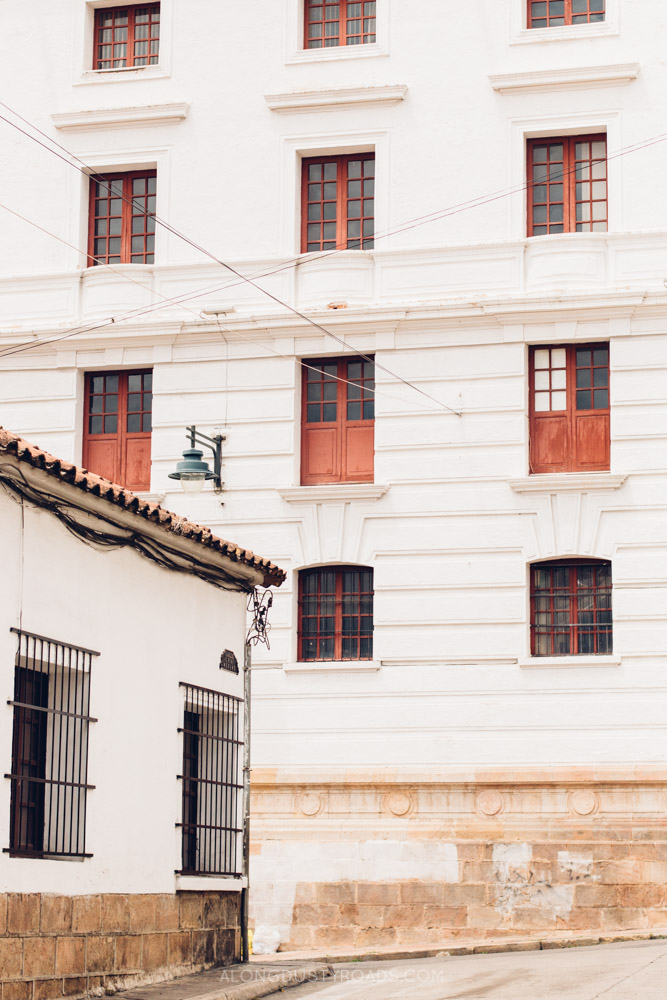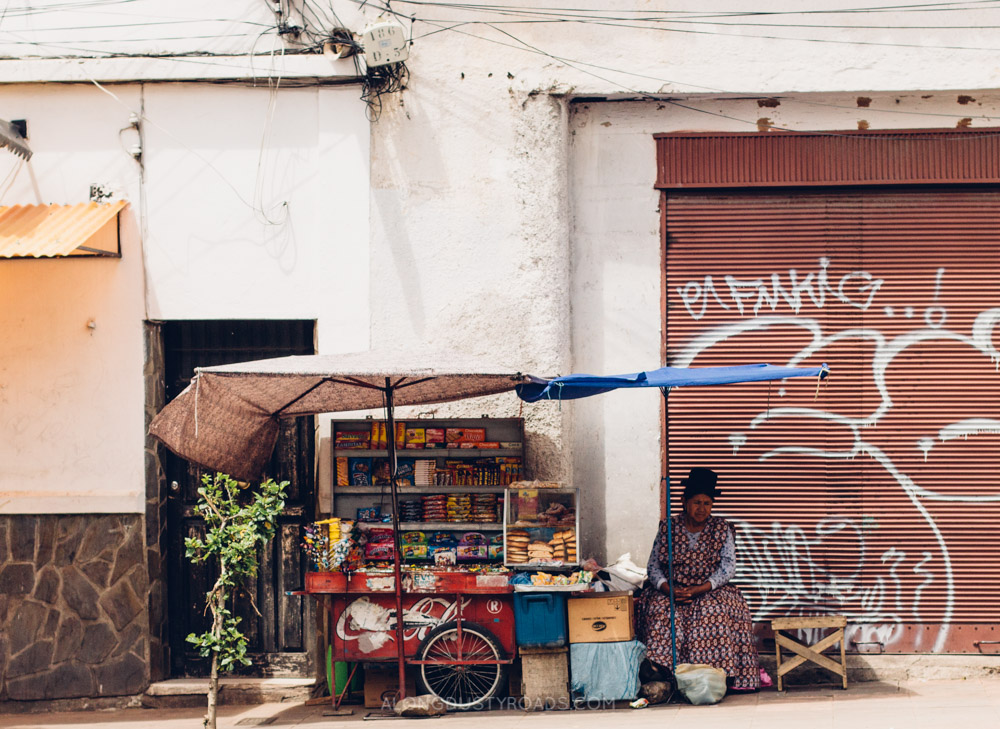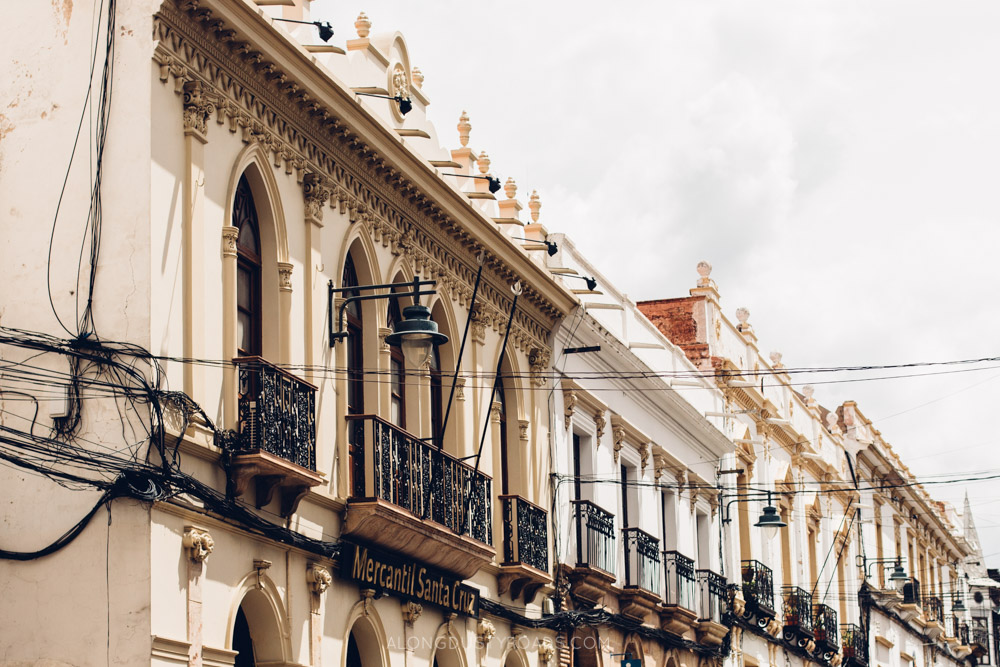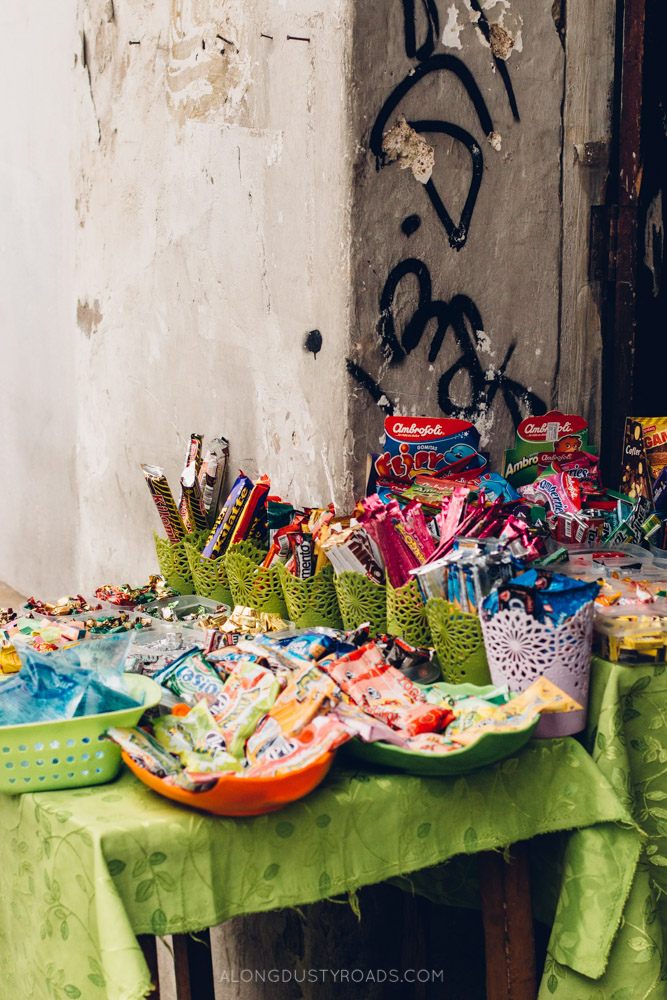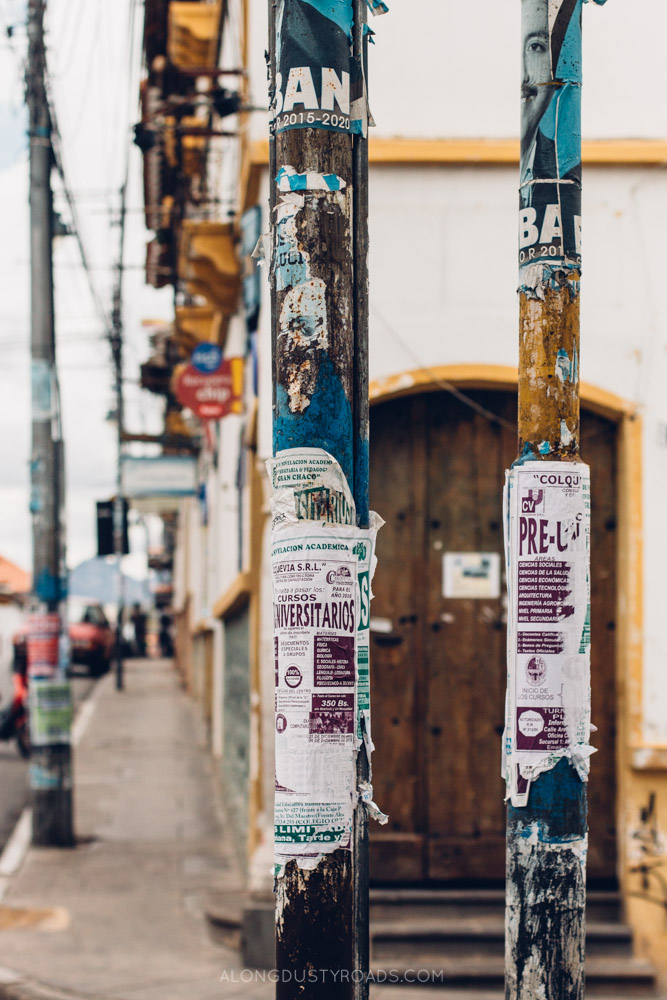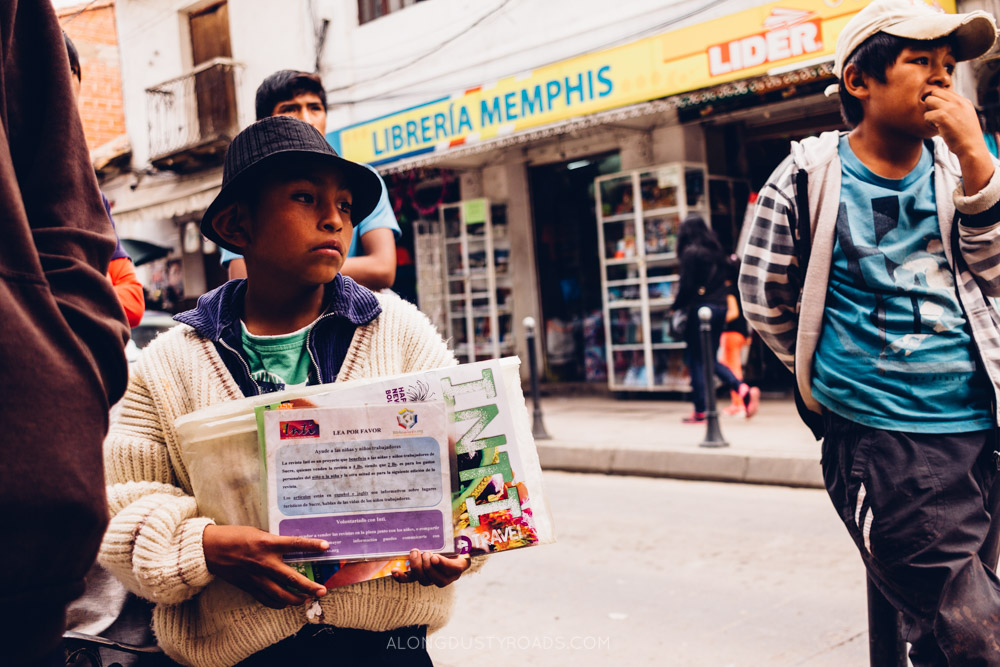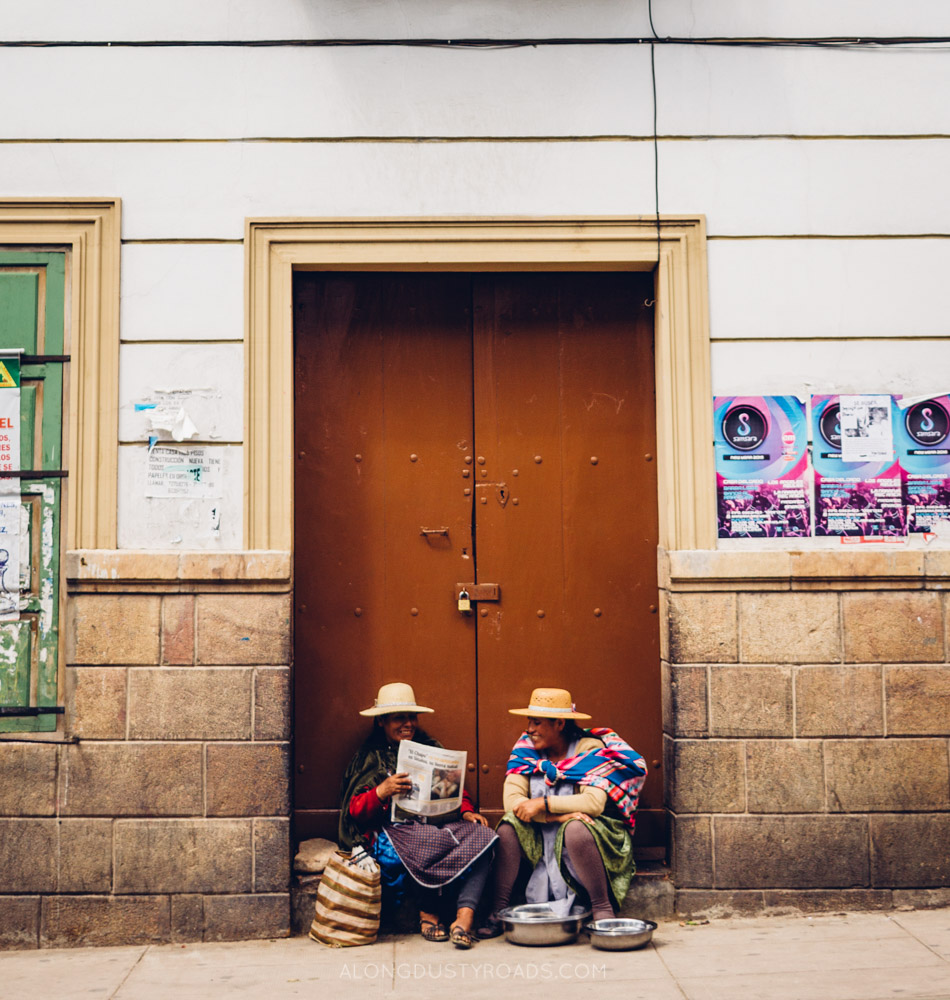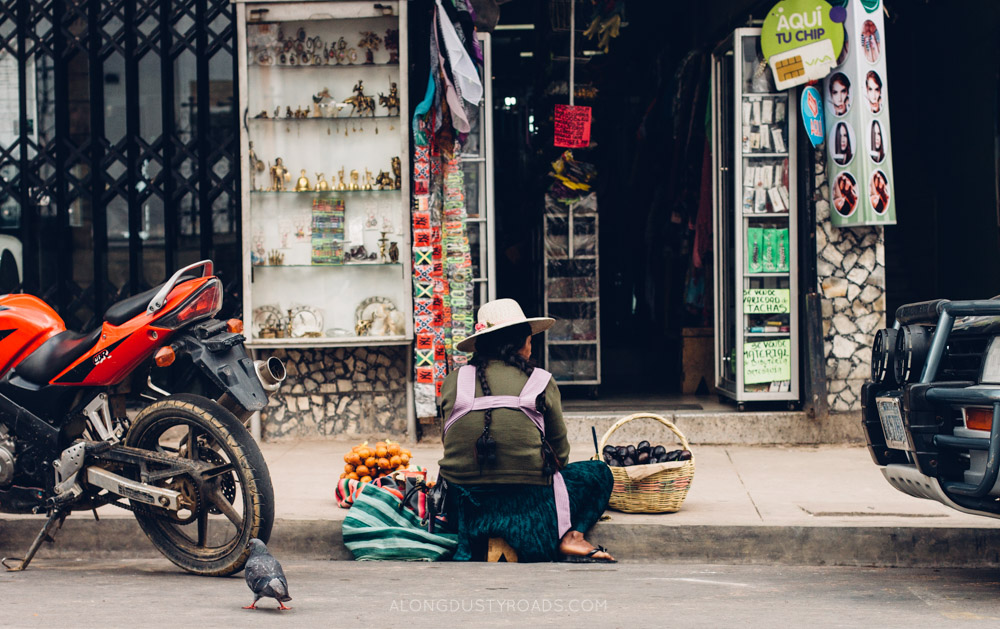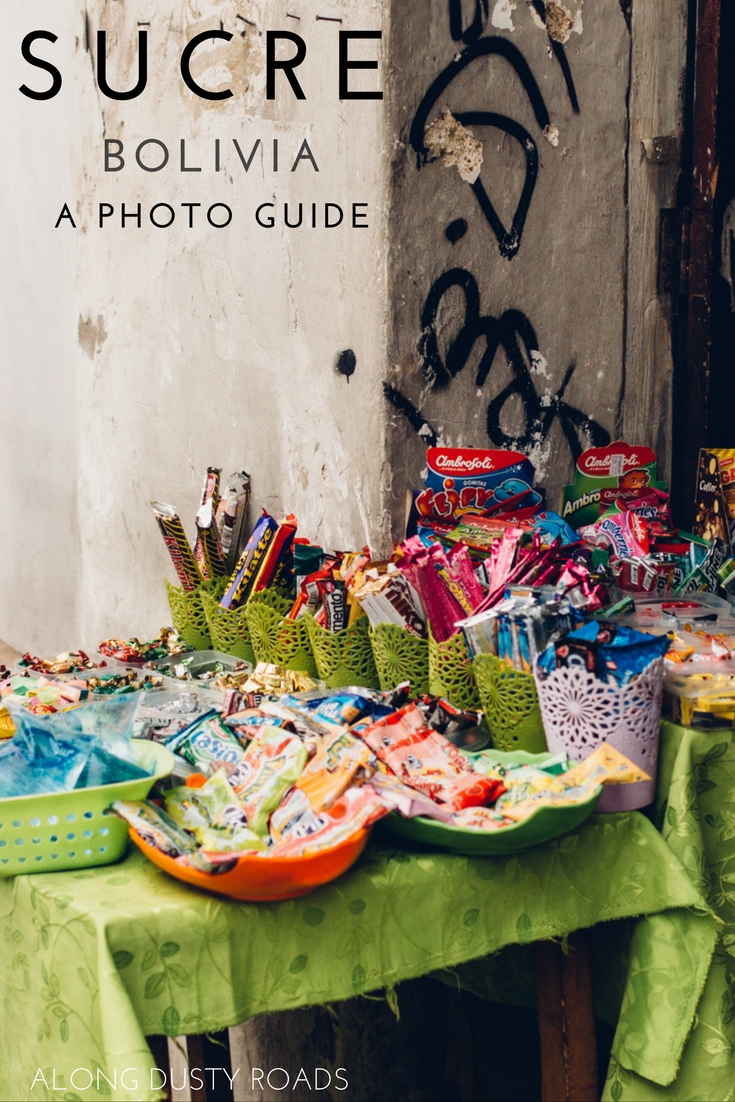Sucre is not unknown on the tourist trail, in fact it's one of South America's most popular spots to learn Spanish. This city, full of beautiful churches and grand buildings should offer countless opportunities for lists of must-dos, cannot misses and bucket list items. And yet, we have very few.
But don't think for one moment that we did not love Sucre.
We spent six days in Bolivia's ethereal white city, exploring verdant green town squares and quiet streets, walking a familiar path along narrow paved roads. Mornings spent sipping sweet orange juice, and discovering hidden corners of a place that deserved our time.
We visited the central market each afternoon, battling with weather worn women in colourful skirts for huge bunches of fresh herbs and baskets of perfectly ripe fruit. The daily dance, an education in how to haggle from the best saleswomen in the country.
Nearly a week passed and it was sun-blushed cheeks and full memory cards that left with us on that cramped overnight bus to La Paz - not ticket stubs and crumpled pamphlets.
Of course, many will take the time to admire this city from within the walls of local museums and ancient churches - there is nothing wrong with that. Yet for us, the true sights of Sucre are cannot be discovered in the pages of a guidebook. No, they are found in the streets; on the faces of its people and its crumbling walls - a city with a rugged romanticism that is difficult to put into words.
So no, this post will be far briefer in words that many of our other posts, and instead, we will tell Sucre's story in photos.
(But at the bottom of the post you'll still find some of our key things to know before you visit!)
A few tips for Sucre
As we mentioned above, Sucre is an incredibly popular place to learn Spanish in South America - and for good reason - it's relatively cheap and you can find excellent teachers. There are dozens of schools in the centre, and courses can easily be arranged directly with them or via your hostel. As with many things, if you plan on studying for more than a week or so, try and negotiate a slight discount - they may not give it, but it's always worth a go!
Check out this excellent post for further information on studying Spanish in Sucre.
Given the city's popularity, it's not a surprise that there are an abundance of hostels to choose from, of generally excellent standards. We stayed in a private double at 7 Patas Hostel, and highly recommend it for anyone visiting Sucre. Set in a beautiful colonial building, it has a large kitchen, sun-soaked outdoor social space and is very secure - we thought it was excellent value for couples and solo travellers.
One must-do whilst you're in Sucre is a visit to Tarabuco Market, which takes place every Sunday. It is unquestionably the best place to truly appreciate the sheer diversity of Bolivia's indigenous population, as well as investing your money directly for souvenirs. Check out our guide - and photo journal - here.
Inward/onward travel
The main bus terminal is located 2km out of the city centre, so if you've got a heavy bag, you'll want to take a taxi. This is charged at 5B per person and, if travelling at rush hour, make sure you allow extra time for the heavy traffic.
Leaving in the day time, there are direct buses from there to Potosi (3-4 hours, 10B - 35B) and Uyuni (7-8 hours, 60Bs). All other buses require an overnight journey, including La Paz (45B - 135B), Oruro (30B - 95B), Santa Cruz (35B - 110B), Cochabamba (30B - 90B), and Tarija (60B - 83B). Multiple bus companies run these routes, each with their own ticket booth - you have to buy your ticket as early as possible in the morning if you plan on travelling that night.




